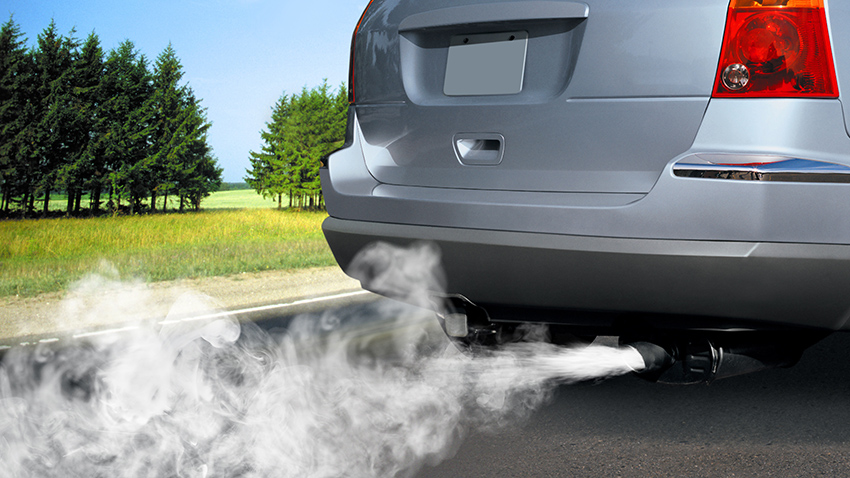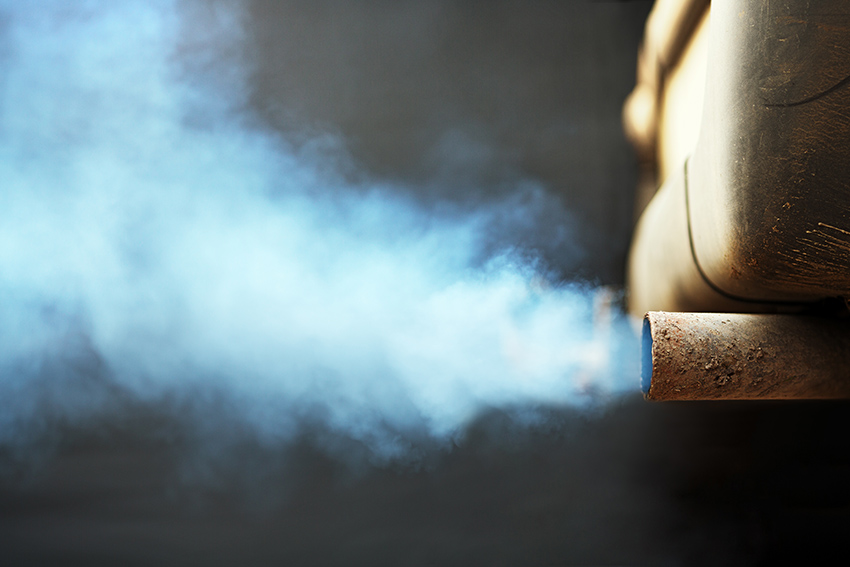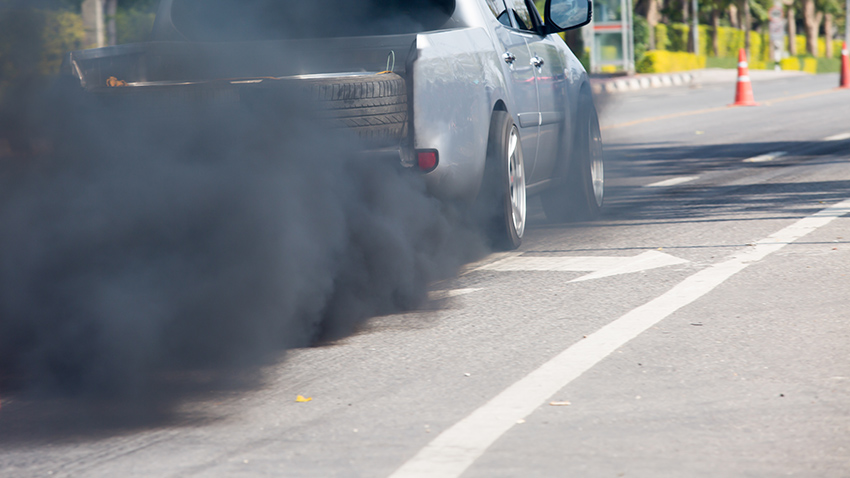product comparison
Quantity: {[ basketItem.quantity ]}
{[ formatPrice(basketItem.price * basketItem.quantity, basket.currency) ]} ({[ formatPrice(basketItem.price, basket.currency) ]})
What do the colors of the exhaust fumes mean?
In the cold season or when the engine is cold, it is quite common for white smoke to smoke from the exhaust. As soon as the car is a little driven and the engine is warming up, this phenomenon disappears again. If, however, the car exhaust fumes are to be seen permanently, care must be taken, as the composition of the exhaust fumes is then somewhat incorrect. The normal car exhaust fumes are largely colourless, so any change in colour is an indication of a malfunction. Depending on the colour of the smoke, there are different causes which generally require rapid intervention.
In the following article we will deal with the different causes from which an exhaust fumes. We distinguish between the following 3 exhaust colours:
- White smoke
- Blue smoke
- Black smoke
The colours indicate the additional components that are undesirable in the car exhaust fumes.
White smoke comes from the exhaust
White smoke coming out of the exhaust always means that there is water in the exhaust. Starting the car when the engine is still cold is condensation that evaporates from the hot exhaust. However, if the white smoke is visible during the entire journey, water will enter the combustion process through other channels.
Oil, fuel and coolant basically circulate in the engine block. The cylinder head gasket is responsible for ensuring that these fluids do not mix. However, if this is defective, coolant, which mainly consists of water, enters the combustion chamber. This then evaporates and white smoke comes out of the exhaust. In this case, the car should be parked as soon as possible so that it does not remain lying with greater damage.
Although the cylinder head gasket is affected, you can test as follows:
- The first step is to release the pressure from the cooling system when the engine is switched off. If the engine has warmed up, the cover must be opened carefully by a quarter turn. Now the pressure can escape. Attention: hot water vapour will escape during a longer journey. If it no longer hisses and bubbles, the cover can be removed completely.
- Now new coolant can be refilled.
- The motor is then restarted when the expansion tank is open
- If bubbles form in the expansion tank, the cylinder head gasket is defective and must be replaced directly.

White smoke may also occur next to the defective cylinder head gasket due to a blocked injector or faulty ignition. If the timing is not ideal for fuel-air-mixture ignition, combustion residues will enter the exhaust air and white smoke will come out of the exhaust. In all cases, the workshop must be consulted urgently in order to avoid major damage.
Exhaust smoke from exhaust blue smoke

If the exhaust color is bright, you should check carefully whether the smoke is white or not blue. Blue smoke indicates that burnt engine oil is present in the exhaust gases. The latter would be an indication of a leaking oil circuit. This can happen if the valve stem seal becomes porous or if the cylinder ring or the piston rings are defective. Even with blue smoke, a damaged cylinder head gasket can be the cause. Diesel vehicles equipped with a turbocharger are most frequently affected.
If the blue smoke occurs after an oil change, it can actually be just too much oil that has been accidentally filled in. In this case, the blue smoke is harmless and will disappear over time. If there is no oil change and blue smoke can be seen in the exhaust, the workshop should be visited urgently. Also pay attention to the indicator lights in your vehicle. If the oil level drops quickly without a puddle of oil forming under the vehicle, quick action is necessary.
What to do with black exhaust smoke?
Black smoke means that the fuel has not been sufficiently banned and is leaking into the exhaust gases. Diesel drivers in particular know this very well from earlier times. In the past, black smoke was mainly caused by soot particles, especially during frequent short journeys and longer standstills. This allowed the soot particles to accumulate in the exhaust and be blown out when starting.
In the meantime, however, the soot particle filters have been developed so well that no black smoke is usually visible in diesel vehicles either. If it occurs nevertheless, this indicates incomplete combustion. This can be caused by problems with the following spare parts:
- Lambda probe
- Spark plugs
- motor control
In modern vehicles, the fuel-air mixture ratio is determined via the Lambda probe. If there is a defect here, this can lead to a displacement of the components. One result of this would be that more fuel is supplied or too little air, resulting in so-called fat combustion. As a result, more fuel is available than can be burned. The remainder is expelled via the exhaust gases, resulting in dark exhaust smoke.
Beside the lambda sensor, a defective spark plug is also frequently responsible for the black exhaust color. However, it is also possible that the air mass meter is defective and thus transmits an incorrect value to the engine control system as to how much air is supplied. In addition, the ignition can also be adjusted. This is also checked by the TÜV within the scope of the HU / AU, for example, and must be readjusted if necessary. Alternatively, it is also possible that the air filter is dirty and does not allow enough air into the combustion chamber. The air filter should therefore be checked regularly and replaced at each inspection date.
If black car exhaust fumes can be seen on the vehicle, it is advisable to visit the workshop of your choice in good time. In many modern vehicles it is no longer sufficient to simply replace air filters, spark plugs or the lambda sensor. In most cases, an adjustment of the on-board electronics is also necessary, which should only be carried out by trained personnel. Even if black smoke does not cause any major damage to the vehicle, the cause should still be rectified as quickly as possible, as the smoke is harmful to the environment. In addition, hefty fines are quickly due if you are driving a "dirty" car for too long.

Colored car exhaust fumes usually require fast action
No matter which exhaust color is visible, this is an indication of a defect or malfunction in the vehicle. If blue smoke or white smoke emerges from the exhaust, it is necessary to visit the workshop immediately, as there is a risk of major engine damage. Black smoke, on the other hand, is not harmful to the vehicle, but should be repaired promptly.
A visit to the workshop can rarely be avoided, as adjustments to the electronics are usually necessary. In addition, many engine compartments are so heavily obstructed that the relevant parts are difficult to access. Our service team will be happy to help you choose the right spare parts.

 Deutsch
Deutsch  English
English 





























